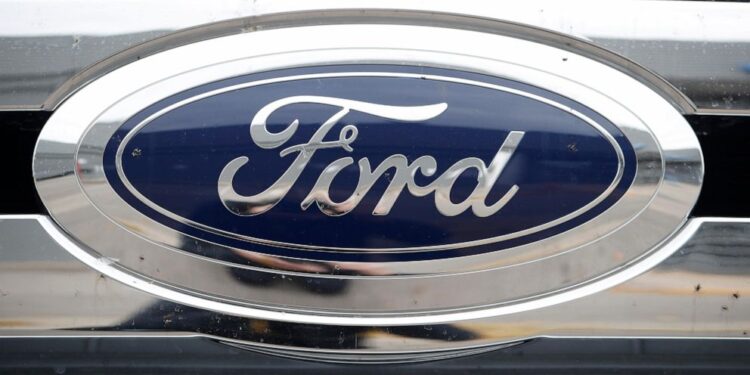Ford says its fourth-quarter net income fell 90% from a year earlier
Ford Motor Co. reported Thursday that its fourth-quarter net income fell 90% from a year earlier, leading company officials to say the automaker’s costs are too high and to pledge more belt-tightening this year.
CEO Jim Farley said Ford should have done better last year, and it left $2 billion in profits on the table that were within its control. He said Ford will correct that with improved urgency and execution this year.
“These are the simple facts, and to say I’m frustrated is an understatement, because the year could have been so much more for us at Ford,” Farley said.
The company, he said, is transforming its product development, manufacturing and supply-chain management to reduce costs, at the same time it’s shifting to electric vehicles.
“We have deeply entrenched issues in our industrial system that have proven tough to root out,” he said. “The strength of our products and revenue has masked this dysfunctionality for a long time.”
The global shortage of computer chips and other parts hit Ford hard at the end of last year, costing it production of roughly 100,000 vehicles that could have been sold, Chief Financial Officer John Lawler told reporters.
“Our cost structure is not competitive, and our quality is not where it needs to be,” Lawler said. He and Farley said there will be more white-collar layoffs, and the company needs to cut manufacturing and warranty costs.
Lawler said about $1 billion of the $2 billion in lost profits was due to lower production and lost sales, the other $1 billion was in operational costs. He attributed about 60% of the production problem to the chip shortage, with the rest coming from parts suppliers who had trouble ramping up factories.
“It’s something that we need to do a better job managing through,” he said, adding that it’s “hand-to-hand combat” securing chips.
To fix the problem, Ford will work with chip suppliers and brokers, as well as redesign car computers to use different chips that are more abundant. “It’s about being as flexible as we can,” he said.
For this year, Lawler sees industry sales volumes in the U.S. rising to about 15 million vehicles, which should help Ford with increased sales, especially for its newer models, Lawler said.
Lawler also said Ford sees a mild recession in the U.S. this year and a moderate one in Europe.
But in addition to the recessions, Ford sees higher interest rates, lower pension income, lower profits for its credit arm and currency fluctuations as headwinds this year.
The company sees vehicle prices falling about 5% this year as automakers increase discounts and other incentives while vehicle supplies improve. Some of that will come from dealers, and some from Ford, Lawler said.
The Dearborn, Michigan, automaker said it made $1.26 billion from October through December, with revenue up 17% to $44 billion. The company made an adjusted 51 cents per share, falling short of Wall Street estimates of 62 cents.
Quarterly revenue, however, exceeded estimates of $41.39 billion, according to analysts polled by FactSet.
To be sure, earnings in the fourth quarter of 2021 were inflated by one-time items such as the $8.2 billion increase in Ford’s investment in electric vehicle startup Rivian as its stock price skyrocketed.
For all of 2022, Ford posted a $2 billion net loss, which it attributed largely to one-time items. During the year, the investment in Rivian dropped $7.4 billion as its stock value plummeted. The company also had a $2.7 billion drop in its stake in autonomous vehicle unit Argo AI, which was disbanded last year.
Ford declared a first-quarter dividend of 80 cents per share, attributing it to strong cash flow and a profit it made on sale of the Rivian investment.
Ford, which announced earnings after Thursday’s closing bell, saw its shares fall 6.3% in after-hours trading.
Before taxes last year the company made $10.4 billion, below its guidance of $11.5 billion.
The company said it expects pretax earnings of $9 billion to $11 billion this year, below last year’s estimates.
Pretax income in North America rose $1.8 billion to $9.2 billion. That means roughly 56,000 unionized factory workers will see profit-sharing checks of $9,176 in March, about $1,800 more than they got last year.
Ford’s sales in the U.S., its most profitable market, dropped 5% during the fourth quarter as the company was hit hard by parts shortages along with other automakers.
Strong prices for Ford vehicles helped to offset declining sales. Customers paid an average of $56,143 for company vehicles in the fourth quarter, about 10% more than the previous year, according to Edmunds.com. Many of those sales were high-end trucks and SUVs.
Source: abcNEWS



Recent Comments